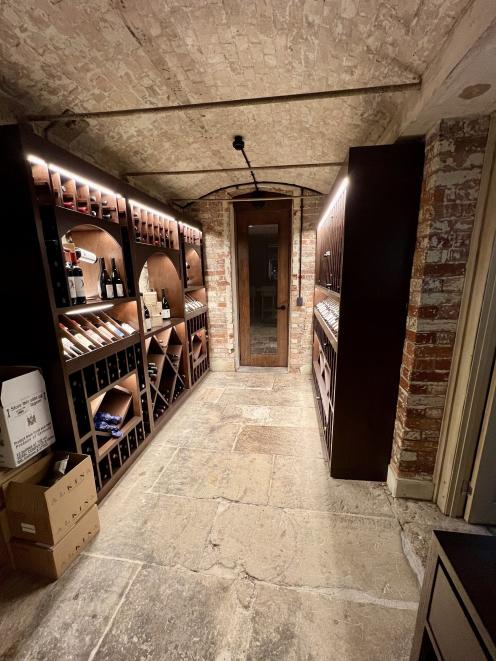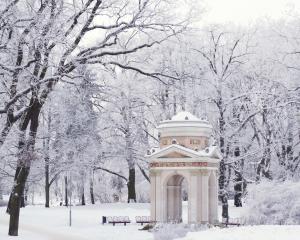
Whenever I’d mentioned exploring Tasmania, the common response would be "Why do you want to go there?".
I couldn’t really answer other than to say I’ve always preferred islands to big cities.
Once you understand the geography of this area, dating back to the Ice Age with rising sea levels, the land bridge disappearing and subsequent formation of the island of Tasmania, you appreciate its isolation and independence. Aboriginals lived undisturbed in Tasmania until British settlers arrived early 19th century and created colonies. After the infamous Black Line offensive in 1830, the majority of Aboriginals were forcibly relocated to Flinders Island.
Flying into Tasmania it becomes clear that national parks and lush native forests dominate the landscape. We have opted for a 10-day road trip to see as much as possible. Driving is a dream on the island as the traffic is sparse and the infrastructure excellent.
Opting for the coastal road, myriad signs alert you to wildlife in the area. I manage to hit the brakes in time to avoid two wallabies that decide at the last minute to bounce out in front of me. They are more prone to travel at dusk and sadly there’s a bit of road kill on the more remote roads.
The first stop is Richmond, renowned for its early 19th-century architecture. A short walk takes you to the heart of this charming village with heritage buildings, antique stores and quaint cafes offering lunch in the garden.
Arriving at Freycinet National Park I’m keen to do the iconic walk to Wineglass Bay. Tasmania has an easy user-pays system for visiting national parks, based on a combined fee for the carpark and the track.
It’s an easy stroll through the eucalyptus groves dwarfed by towering granite boulders that define a track with close to a thousand steps. The reward is a gorgeous stretch of beach known as Wineglass Bay.
I’d presumed it had earned the name given it’s the perfect place to watch the sunset with a glass of wine in hand. I couldn’t have been more wrong.
From 1830 the bay was an active whaling station and over time the description stuck as it depicted the brutal slaughter of thousands of southern right whales, repeatedly turning the bay "claret" red.
The ideal way to get an overview of Freycinet is by boat. Wineglass Bay Cruises operate half and full-day cruises that include lunch and bar service. Many of the bays in the national park are named after various English and Dutch ship captains that explored this area. We pass Hazards Beach, named after Captain Richard Hazard, a whaler whose sailing vessel found its final resting place on rocks.
Stark 100-metre high granite cliffs once utilised as rock quarries are now an optimal sunbathing deck for cormorants.
As we reach Waterfall Cove and Lemon Rock lighthouse, a pod of common dolphin tuck in and bow-ride alongside us.
It’s totally understandable why this area would attract so much interest.

Launceston, one of Australia’s oldest cities and the first to develop hydro-electricity, has long been admired for its Victorian architecture.
Several buildings from the 19th century remain intact, one of the most unique being Stillwater Seven, situated alongside the Cataract Gorge. It’s hard to imagine it was once a flour mill servicing the region in its day.
The recently restored building is now a luxury boutique hotel and award-winning restaurant. Features of the old mill including enormous wooden support beams and the weathered kauri floor were intentionally retained to preserve the original architecture. The restaurant offers a menu dedicated to locally caught Tasmanian seafood and other offerings such as southern-style wallaby wings.
The 72km-long Tamar River runs through the city and was once the main thoroughfare for ships transporting minerals.
It’s an easy stroll to the start of the Cataract Gorge, a natural phenomenon carved over millions of years. Visitors are encouraged to walk alongside and watch the water cascade through Jurassic dolerite rock formations.
Launceston has a popular Saturday morning harvest market in the heart of town. Local growers sell plants and flowers, fruit, vegetables, cheese, truffles and a selection of craft spirits. Local musicians add to the village atmosphere.
A 15-minute drive from Launceston takes you to Tamar Valley, home to vineyards and small-batch bespoke distilleries.
We stop at Turner Stillhouse for a cellar door tasting featuring its flagship brand Three Cuts Gin, named Australia’s best gin in 2021.
With 30 wineries on the Tamar Valley trail, a visit to several artists’ studios, galleries and design stores, including Design Tasmania in Launceston, I feel culturally satiated.

We arrive at the historic Watchman’s cottage at Red Feather Inn. The beautifully preserved Georgian building made from sandstone and accentuated by swathes of purple jacaranda, was built in 1842 using convict labour.
This is the meeting point for our Tasmanian Walking Company Bay of Fires walk. Having sat on my bucket list for so long, it was nothing short of a miracle I’d finally made it.
The morning is spent dissecting the essentials list. It’s the last opportunity for additions to the backpack.
I’m used to a heavy handbag, but keeping the backpack at 10kg was a little more challenging. The trick is to think minimal, leaving anything superfluous behind.
After a two-hour bus ride, we start our hike at Stumpy Bay. Colossal granite boulders arch dramatically across the bay. Stark silica-white sand squeaks underfoot and although I’d been prepared for all weather events, the 50-knot winds are something else.
I’d hoped to hike barefoot some of the way, but this wasn’t the day for it.
Sand swirled fiercely around my tramping boots and I was thankful to be wearing sunglasses to prevent it exfoliating the skin from my face.
We stride over rocks passing sandy coves dotted with coastal shrubs and heaps of Bull kelp.
The 9km walk takes you to Forester Beach Camp, six huts with a long-drop toilet and no shower.
From scratch, our two knowledgeable guides manage to whip up a tasty laksa followed by a decadent chocolate cake. After several rounds of whisky and board games, we retire to our tent.
I wake early to the roaring sound of the ocean and begin the 16km hike that includes some bush whacking, a stream crossing at Deep Creek and a well-earned lunch at Wombat Cove. I note that unlike many hiking trails in New Zealand, there are no long-drop toilets here. The guide grins, suggesting I make full use of the Tasmanian "facilitrees".
Spotting a stingray closely pursued by a 3-metre shark was a memorable finish to the day, but it somewhat shortened my afternoon swim.
Instead, I sink into the secluded outdoor bath overlooking the bay, feeling any tension subside.
The Bay of Fires lodge is modestly camouflaged within native bush and is nothing short of perfect. There are comfortable king bedrooms, water views, hot showers and a three-course dinner is served on the deck. The guide jokingly warns us about imminent "lodge podge", given the food is so good.

We walk in the direction of Ansons Bay and traverse the salt marsh to Shark Bay. My inner child races down the huge sand dune, only to collapse face down on Abbotsbury Beach.
With the Bay of Fires walk complete, I hit the road heading west for three hours to Cradle Mountain Lodge in the Tasmanian Wilderness World Heritage Area, one of the largest conservation areas in Australia.
With just one day planned in this alpine region, we opt for the relatively challenging 10km hike. The air is noticeably fresh walking through the eucalyptus forest around Dove Lake.
We continue to Hansons Peak, a steep uphill climb on rocky crags with a fixed chain assist. The final leg takes you to Marion’s Lookout and Kitchen Hut, alongside narrow pathways that overlook sheer cliff.
I’d been advised to pack shorts, thermals, a wind jacket, water bottle and tramping boots. I’d overlooked chocolate, which in hindsight I would’ve traded just about anything for.
This mountain region is spectacular, reminiscent of the Tongariro Crossing, Lake Taupo and similar great walks in New Zealand.
After being relatively isolated for a week, it’s a little unnerving driving into Tasmania’s capital city, Hobart. The downtown area is dotted with beautifully refurbished historic buildings that line the foreshore of an impressive waterfront.

One of the city’s oldest heritage sites, The Tasman, located in Parliament Square, was known as St Mary’s Private Hospital in a former life. The hotel officially opened late 2021, merging an artistic blend of 1840s’ Georgian architecture with 1940s’ art deco, and contemporary modernist architecture. The original sandstone wall was retained in the hotel bar and historic printing wells are buried beneath the stone floor in the wine cellar.
A short walk to Salamanca Square reveals a group of tastefully restored warehouses, charming wine bars and restaurants that specialise in local produce.
Battery Point is an easy walk south from the town centre and a quick uphill on Kelly’s Steps brings you to Arthur’s Circus, a group of once opulent traders’ properties and colonial-era dockworkers’ cottages, full of old-world charm.
I take the harbour ferry heading to MONA, the most intriguing museum I’ve ever visited.
The contemporary centre dedicated to unique art in any form, opened in 2011 on the grounds of the Moorilla winery. The building itself is exceptional, designed from sandstone, corten steel, glass and concrete.
Art works have been carefully curated on three levels to include a cocktail bar and basement combining adult fantasy themes and pop art. It showcases rare Egyptian artefacts alongside a room featuring complex spider webs. A confessional in the form of a giant inner ear made from corten steel allows visitors to walk through and whisper their secrets. A decadent lounge exhibits fine antiques, with a Picasso thrown in for good measure. Musicians play classical music indoors, while a heavy rock band jams outside and then there’s the boutique Moorilla winery and Moo Brew tasting table. If it all sounds hectic — that’s because it is.
Two restaurants offer a unique eating experience, but visitors are equally welcome to bring a picnic and lounge on the lawn. Several art pavilions can be booked overnight, should you spontaneously decide on a sleepover.
A full day at MONA still wasn’t enough, but gave me a clue as to the ingenuity and determination behind the museum’s owner and visionary, David Walsh.
Given Tasmania’s infamous convict history, a visit to historical Port Arthur was unquestionable. The penal colony was operational from 1833 and continued for 40 years. Although the dilapidated brick building now resembles a rambling ruin, you can well imagine the extreme conditions endured by inmates.
It’s a sobering finish to a demanding itinerary, but an important reminder of the lesson’s history can teach us.
With its colourful past, natural landscape and enterprising people, this unique island punches well above its weight. Next time anyone asks why go to Tasmania? My response would be: "Why on earth not?"












